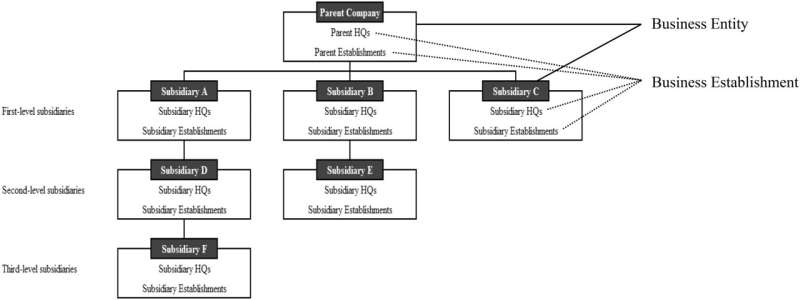This article has been reviewed according to Science X's editorial process and policies. Editors have highlighted the following attributes while ensuring the content's credibility:
fact-checked
proofread
Study suggests major chemical corporations hide most polluting activities in subsidiaries

According to the EPA's Toxics Release Inventory (TRI), chemical manufacturing is one of the U.S.'s three largest polluters, along with metal mining and electric utilities, which together account for two-thirds of the country's toxic releases.
Yet a recent study suggests that many of the top chemical companies shield themselves from environmental penalties behind a foundational element of business law: subsidiaries. According to the study published in the Strategic Management Journal, adding a single layer of corporate hierarchy was associated with a 39% increase in the degree of toxic emissions.
"The multi-layered structure permits parent companies to buffer themselves from the negative legal, reputational, and punitive outcomes related to risky activities and, thereby, shift the costs to the society as a whole," said Juyoung Lee of the Hong Kong Polytechnic University, one of the study's authors.
Lee, with co-author Pratima Bansal of Ivey Business School in Canada, analyzed 7,400 U.S.-based businesses owned by the 67 largest chemical manufacturing groups headquartered in America. The study examined actual business establishments, from low-polluting administrative locations to high-polluting industrial ones.
By combining information from Dun and Bradstreet's Corporate Family Tree Data and the EPA's TRI program, among other sources, the authors pinpointed where the highest polluting sites fall in their corporate structures. Overwhelmingly, they were hierarchically distant from parent companies.

"The lower pollution-intensive activities are in the corporate hierarchy, the more effectively the parent company can protect itself from government-related risks," Bansal said. "When the subsidiary is farther down the hierarchy in a more complex organizational structure, it's more difficult to prove a parent company's active participation. It's easier to justify its ignorance."
The study tested the possible strategic nature of liability buffering by looking at whether the environmental standards in the parent company's home state affected where polluting sites fell in the corporate structure. The data showed that the stricter the regulations at home, the greater the buffer between parent companies and their polluting sites in the corporate structure.
"When parent companies were headquartered in weak environmental states, the probability of the high polluting sites being among lower-level subsidiaries was almost the same as them being part of the parent organization," Lee said. "For those headquartered in strong environmental states, the probability grew with every step in the hierarchy away from the parent company."
While this association does not overtly prove companies are using subsidiaries to hide from pollution penalties, it certainly demonstrates that strategic buffering is part of the story. It also illustrates that the foundational element of U.S. corporate law—the corporate veil—inhibits environmental regulation enforcement. Government regulations that fail to consider corporate structures may simply result in the harm being hidden, not reduced.
More information: Juyoung Lee et al, Sweeping it under the rug: Positioning and managing pollution‐intensive activities in organizational hierarchies, Strategic Management Journal (2024). DOI: 10.1002/smj.3582
Provided by Strategic Management Society





















